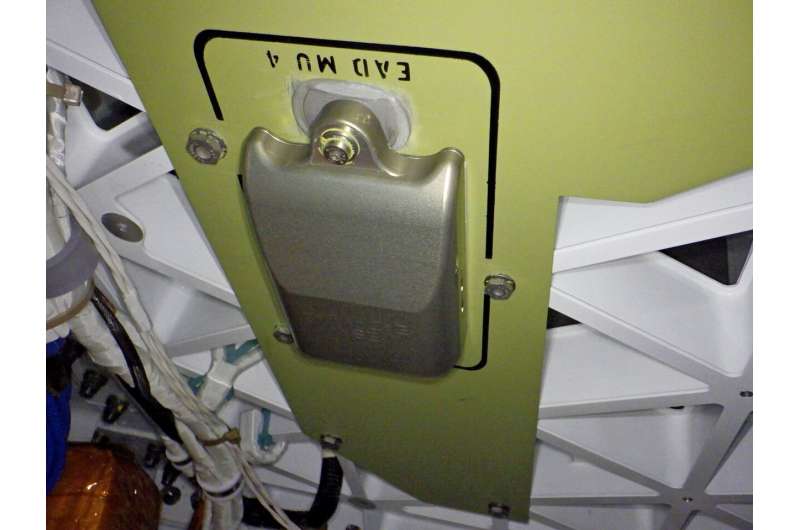ESA astronaut rad-detectors on Artemis

Next Monday's Artemis launch will be an uncrewed first flight, headed into orbit around the moon. Yet technology previously worn by ESA astronauts on the International Space Station has also been hard-mounted aboard the NASA-ESA Orion module.
A set of five ESA Active Dosimeter—Mobile Units (EAD-MUs) will map the deep space and lunar radiation environment in as complete a manner as possible, allowing comparisons with ISS measurements and helping to assess the safety of crewed Artemis missions to follow.
Each about the size of a deck of cards, these EAD-MUs have been mounted on panels dotted around the capsule in different locations. This ISS-tested advanced technology—along with a complementary suite of NASA detectors and instrumented mannequins from the German Aerospace Center, DLR—will allow scientists to see how the radiation fluctuates during the mission, as well as showing total levels of ionizing energies the spacecraft will travel through, from as far as almost half a million kilometers from our planet.
"These EAD-MUs—previously either worn by astronauts or used as area monitors for some 26 different regions of the ISS—are one element of a larger ESA-patented system, which includes a central device for EAD-MU charging and data transfer," Explains ESA physicist Matthias Dieckmann of the Agency's Directorate of Technology, Engineering and Quality, who led EAD development.
"The EAD system first flew with ESA astronaut Andreas Mogensen in 2015. Its aim was to replace passive radiation dosimeters that had more of a 'post mortem' function, with limited detection responses and lacking any time-tagging, indicating only full-time integrated exposure. Instead we produced a gold standard technology that can provide flight surgeons with a complete chronological dossier of a crewmember's exposure history, compliant with first class medical support, and with this obtain a reliable insight into the space radiation environment they live and work within."
The EAD-MUs are also distinguished by verified, well-calibrated detector responses, Dr. Dieckmann adds: "This extends to some 14 orders of magnitude for neutrons, not matched by any other wearable detector, plus sensitivity to electrons and the particle masses emitted by our Sun, from primary protons through to ion nuclei."
The versions aboard Orion are larger than the ISS-flown EAD-MUs, because they are equipped with an automated measurement start system—triggered by the acceleration of the 111-m-tall SLS launcher as it leaves the ground—plus a larger battery to keep the devices running throughout the approximately 40 day duration of the Artemis mission. Their data will be retrieved after Orion's splashdown.
ESA has established a Radiation Research Road Map spanning this decade, which includes the placing of an enhanced version of the EAD-MU system is due to be flown aboard the Gateway—a planned space station in lunar orbit—as part of a set of payloads called the ESA Radiation Sensor Array.
EAD development was supported through ESA's General Support Technology Program, GSTP, which readies promising technology for space, led by Udo Becker. Dr. Dieckmann notes: "This marked the first time, thanks to Udo's support, that this optional Agency program made such a complex development possible, with contributions from four Member States: Austria, Finland, Germany and Ireland."
Provided by European Space Agency





















